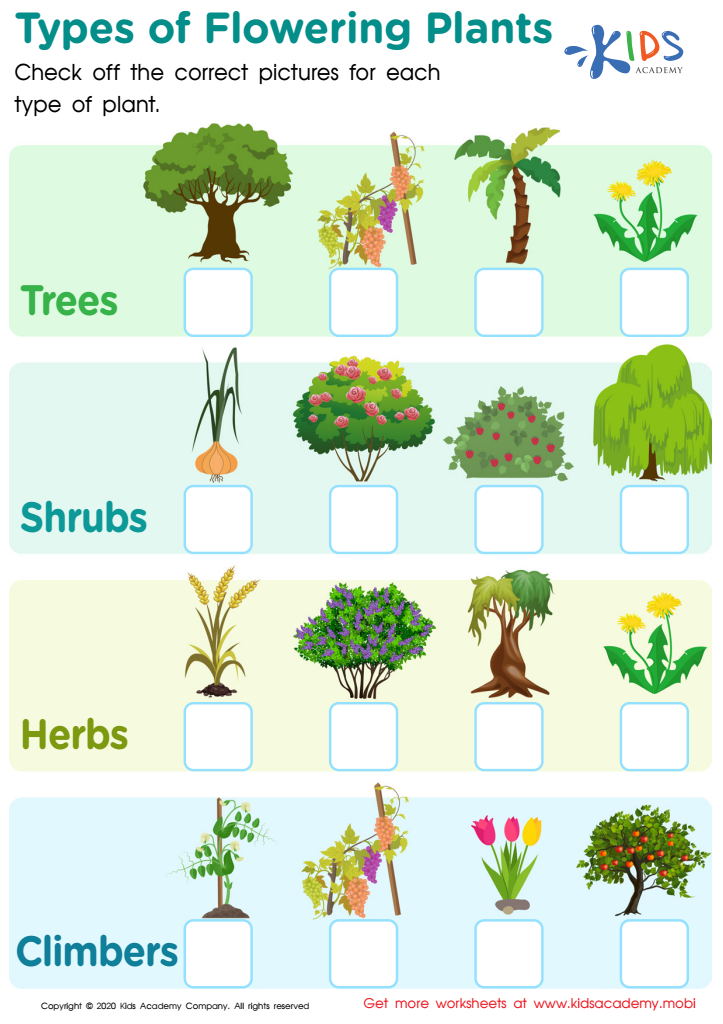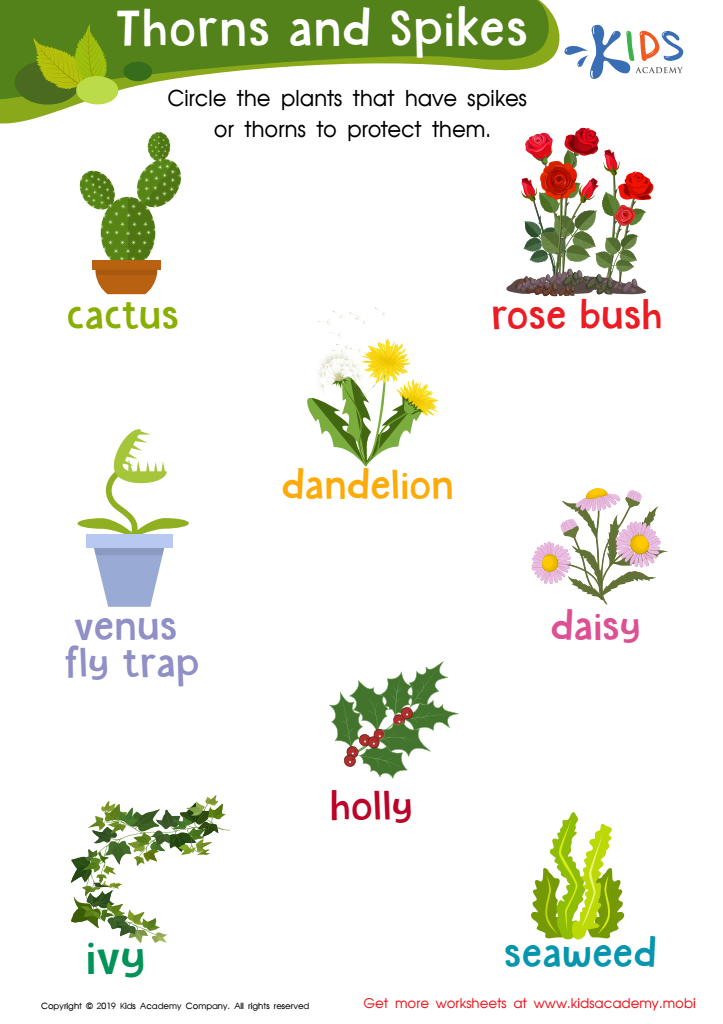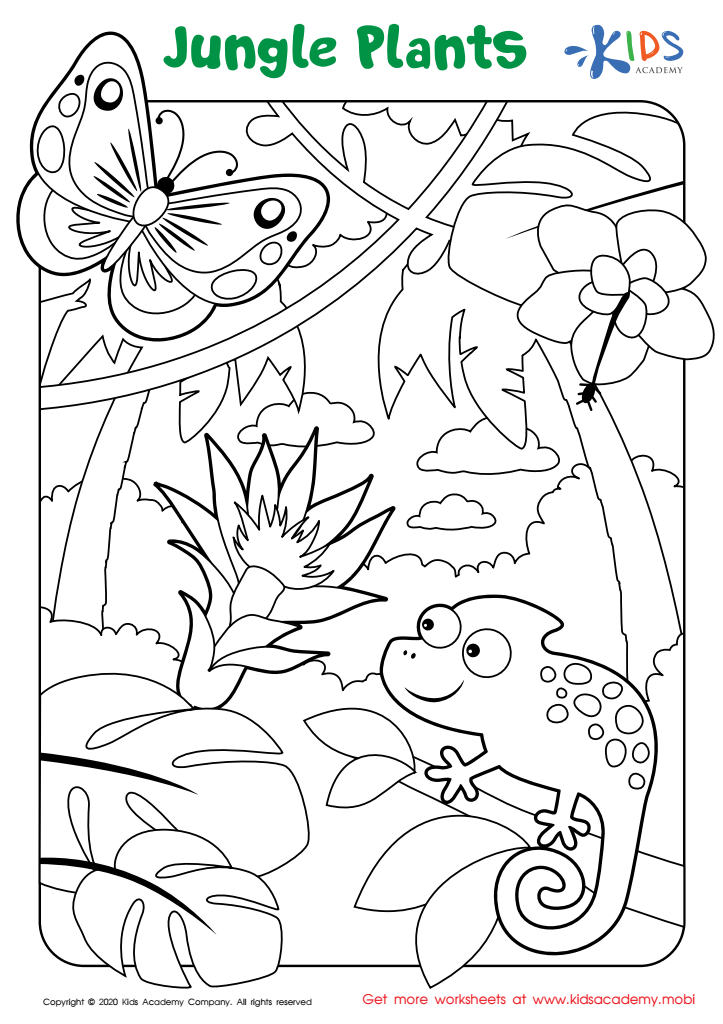Plant identification Science Worksheets for Ages 4-7
5 filtered results
-
From - To
Explore the wonders of nature with our engaging Plant Identification Science Worksheets designed specifically for ages 4-7! These interactive and educational resources encourage young learners to connect with their environment by identifying various plants. With colorful illustrations and simple instructions, children will develop keen observation skills while learning about different plant types, their characteristics, and importance in our ecosystem. Perfect for home or classroom use, these worksheets stimulate curiosity and foster a love for nature. Enhance your child’s learning experience and inspire budding scientists with our fun and informative plant identification activities today!


Types of Flowering Plants Worksheet


Plant Fun Worksheet


Thorns and Spikes Worksheet


What Do Plants Need to Grow Worksheet


Jungle Plants Worksheet
Plant identification science is essential for children aged 4 to 7 because it fosters curiosity, environmental awareness, and foundational science skills. Engaging young learners in identifying and understanding plants instills a sense of wonder about the natural world. This early exposure to nature promotes observation skills and critical thinking, helping children make connections between living organisms and their environment.
Moreover, teaching plant identification enhances language development as children learn new vocabulary related to botany, ecosystems, and habitats. It encourages them to ask questions, make predictions, and explore their surroundings through hands-on activities, such as gardening or nature walks. These experiences also support the development of fine motor skills when children interact with plants in various ways.
Additionally, plant identification can play a vital role in promoting sustainability and environmental stewardship. By learning about different species and their roles in the ecosystem, children can develop an appreciation for biodiversity and understand the importance of protecting natural habitats. This foundational knowledge sets the stage for responsible behavior towards the environment as they grow older. Ultimately, incorporating plant identification science into early education nurtures well-rounded, informed individuals who will become future stewards of the Earth.

 Assign to My Students
Assign to My Students



.jpg)












